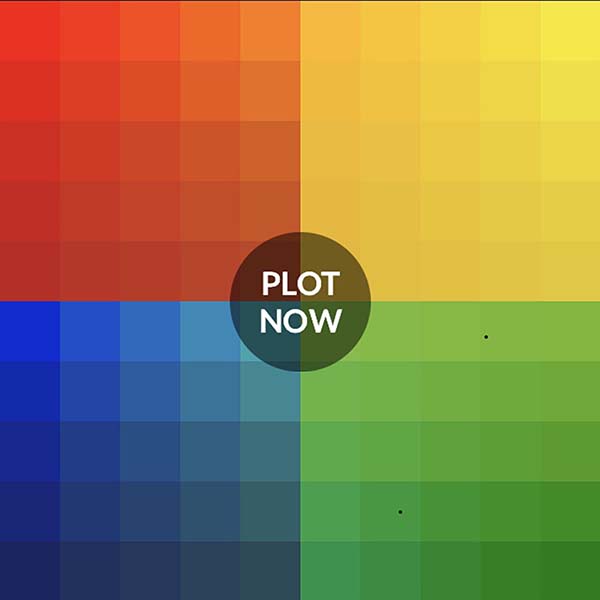
I’ve been enjoying playing with the Mood Meter App for the past two to three weeks which segues nicely with Quantum Mood Theory.
The Mood Meter App caught my eye when I was reading a magazine on mindfulness.
It reminded me of back in the early 90’s.
The Mood Meter was an exercise that was part of The Power To Influence Sales Mastery Program that I used to teach when I owned the Tony Robbins Franchise in Vancouver.
Back in those days, I was more in my head than balanced between my heart and my head, floating in the beginning stages of the four levels of performance consciousness.
- Unconscious Incompetent.
- Unconscious Competent.
- Conscious Incompetent.
- Conscious Competent.
I was in my head with constant amygdala unmet needs, negative emotions and negative beliefs, which fuelled competition with my heart. It made Neuro-Linguistic Programming, or NLP,* inconsistent and unsustainable.
* NLP provides practical ways in which you can change the way that you think, view past events, and approach your life.
I’ve grown to understand that programming values, positive feelings and positive beliefs masking unmet needs, negative emotions and negative beliefs was and is like putting icing on top of an ever-erupting, radiating lava flow.
Over the years I’ve found peace of heart and mind in the ever erupting, radiating lava flow through counselling, journaling, self-reflection, meditation and yoga.
Once one unmasks and sits in comfort with the core discomfort of unmet needs, negative emotions and negative beliefs, one then becomes comfortable with the core truth of what truly radiates from all of us.
Comfortable with the core truth, God’s light, the quantum unified field that radiates from each and every one of us.
Quantum physics – a discrete quantity of energy proportional in magnitude to the frequency of the radiation it represents.
My experience has developed an awareness that questions my core truth and what I’m radiating.
Mood Theory suggests that the observer of the mood can create the result of the mood they are feeling or thinking about.
Again the question is, who is doing the feeling or thinking? The amygdala, the heart, the soul?
The term “observer effect” simply means that the act of observing will influence the phenomenon or situation being observed.
The observer effect applies to physics, technology, and behavior. For example:
- Hawthorne effect, a form of reactivity in which subjects modify an aspect of their behavior in response to their knowing that they are being studied.
- Heisenbug of computer programming, where a software bug seems to disappear or alter its behavior when one attempts to study it.
- To “see” an electron, a photon must first interact with it, and this interaction will change the path of that electron.
Physicists and philosophers have been fascinated by this theory that by the very act of watching the observer affects the observed reality.
From the heart, be the observer, and feel your moods change.
Here’s a link to the Mood Meter App http://moodmeterapp.com/ . An overview is below.
The Science Behind the Mood Meter
The Mood Meter is one of the “anchors of Emotional Intelligence” in the RULER program. It helps people develop the core RULER skills: Recognizing, Understanding, Labeling, Expressing, and Regulating emotions. The Yale Center for Emotional Intelligence describes it as follows:
The Mood Meter develops emotional intelligence over time. Learning to identify and label emotions is a critical step toward cultivating emotional intelligence. Using the Mood Meter can help you become more mindful of how your emotions change throughout the day and how your emotions, in turn, affect your actions. Using the Mood Meter can help you to develop self-awareness and self-regulation, it’s important to understand the full scope of your emotional life.
Mood Meter Mobile App Overview
The Mood Meter, a square evenly divided into four quadrants of primary colors, is the centerpiece of the mobile app. Each color quadrant represents a category of moods:
RED
Emotions are unpleasant and high in energy, like anger, frustration and anxiety.
YELLOW
Emotions are pleasant and high in energy, like excitement, joy and elation.
BLUE
Emotions are unpleasant and low in energy, like boredom, sadness and despair.
GREEN
Emotions are pleasant and low in energy, like tranquility, serenity and satisfaction.
First, users consider where their feeling falls on the Mood Meter in terms of how pleasant or unpleasant they feel (x-axis) and how high or low energy they feel (y-axis). As the user plots their feeling on the Mood Meter, the app reveals emotion words tied to each coordinate on the grid.
Each quadrant has 25 emotion words, for a total of 100 emotion words in the Mood Meter.
[blog-footer]
[testimonialslider id=”4″ set=”1″]

International Values and Behavioral Analyst, Business Coach, Speaker and Author
Executive Coaching Tips for Financial Advisors
Speaking at a City Near You
